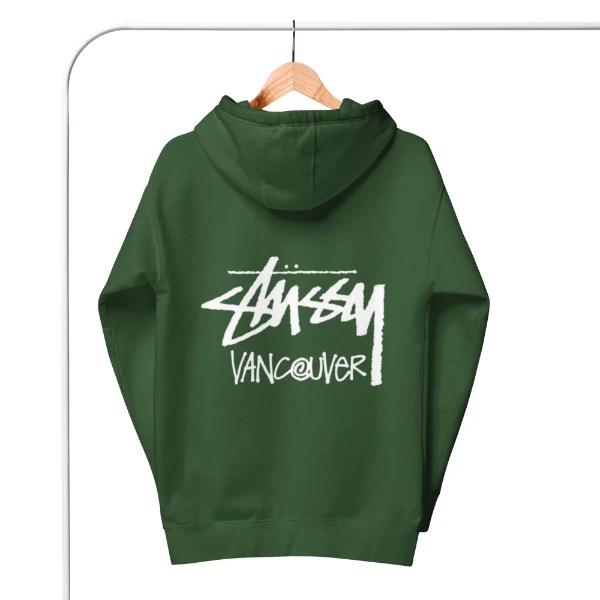The hoodie, once confined to gyms, skate parks, and the wardrobes of teenagers, has emerged as a versatile fashion staple that transcends age, gender, and style boundaries. From streetwear to athleisure, the hoodie’s journey to becoming a Stussy Vancouver Hoodie fashion icon is a story of cultural evolution, practical design, and the influence of popular culture.
Origins and Early Adoption
The hoodie traces its roots back to the 1930s when it was first produced by Champion for laborers working in cold New York warehouses. Its design—comprising a hood, a drawstring, and a front pocket—was intended to provide warmth and convenience. By the 1970s, hoodies had been adopted by athletes and gym-goers, thanks to their association with physical activity and comfort.
The Rise of Streetwear
The hoodie’s transition from a utilitarian garment to a fashion statement began in the 1980s and 1990s with the rise of streetwear culture. Influenced by hip-hop artists, skaters, and graffiti artists, the hoodie became a symbol of rebellion and self-expression. Brands like Supreme, Stüssy, and A Bathing Ape (BAPE) were instrumental in integrating https://trapstarhoodies.com/ into mainstream fashion, often featuring bold logos, graphic designs, and limited-edition releases.
Pop Culture Influence
Popular culture has played a significant role in cementing the hoodie’s status as a fashion icon. Iconic figures such as Run-D.M.C., Tupac Shakur, and Eminem donned hoodies in music videos, concerts, and public appearances, embedding the garment in the cultural zeitgeist. The hoodie’s presence in films and television series, often associated with youthful rebellion and anonymity, further enhanced its appeal.
The Evolution into Athleisure
The 2010s marked the hoodie’s evolution into athleisure, a trend blending athletic and leisurewear. This shift was driven by a growing preference for comfort and functionality in everyday clothing. Brands like Nike, Adidas, and Lululemon capitalized on this trend, producing hoodies that combined high-performance materials with stylish designs. The athleisure movement blurred the lines between workout gear and casual wear, making hoodies a wardrobe essential for various occasions.
High Fashion Embrace
Luxury fashion houses have also embraced the hoodie, elevating it from streetwear to high fashion. Designers like Virgil Abloh for Off-White, Demna Gvasalia for Balenciaga, and Riccardo Tisci for Burberry have incorporated hoodies into their collections, often pairing them with high-end fabrics and innovative designs. The juxtaposition of a casual hoodie with luxury elements has redefined fashion norms, making it a coveted item among fashion enthusiasts and celebrities alike.
Social and Political Symbolism
Beyond fashion, the hoodie has taken on social and political significance. It has been used as a symbol of protest and solidarity, most notably during the 2012 Trayvon Martin case, where it became a powerful emblem against racial profiling and injustice. The "Million Hoodie March" highlighted the garment’s potential to convey messages of resistance and unity.
Future of the Hoodie
The hoodie’s enduring popularity shows no signs of waning. Its adaptability to various styles, from minimalist to extravagant, ensures its place in fashion’s future. Sustainable fashion movements are also influencing hoodie production, with brands focusing on eco-friendly materials and ethical manufacturing processes.
Conclusion
In conclusion, the hoodie’s journey from functional workwear to a fashion icon encapsulates broader cultural shifts and the dynamic nature of fashion. Its ability to adapt and remain relevant across different contexts and eras is a testament to its timeless appeal. Whether on the streets, in the gym, or on the runway, the hoodie continues to be a symbol of comfort, style, and cultural significance.

